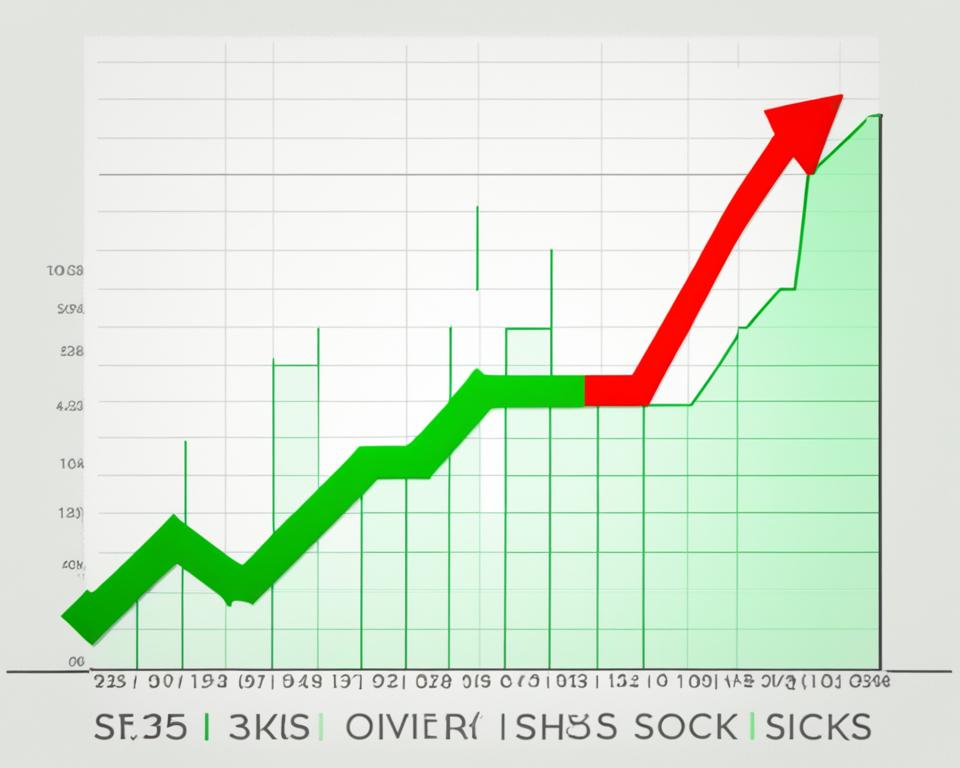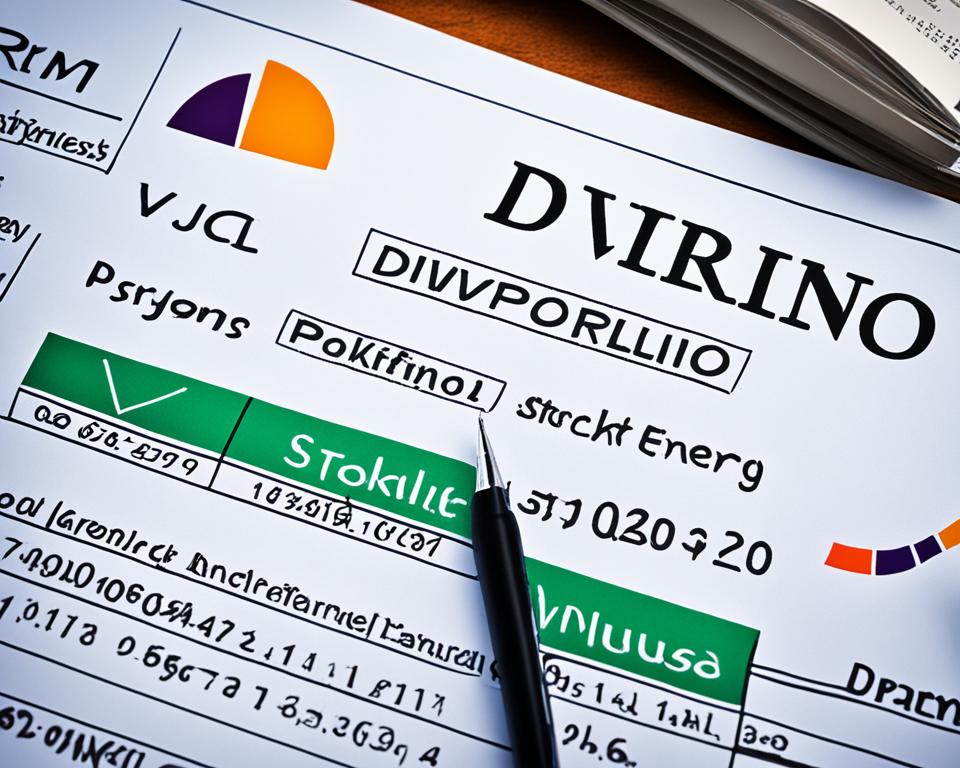As we navigate the complexity and fluctuations of financial markets, many of us are asking a pivotal question: Are dividend stocks worth it? Some consider them the cornerstone of a well-rounded portfolio, especially when unpredictability looms. Dividend stocks could potentially offer a blend of income and growth that appeals to a wide range of investment strategies. Investing in dividend stocks often entails committing to companies poised to share their profits regularly through dividends, presenting a potentially stable source of revenue. Let’s delve into a dividend stocks analysis to uncover whether they accommodate our quest for both security and profitability.
Key Takeaways
- Dividend stocks can supplement your portfolio with a regular income stream, beneficial in volatile markets.
- Not all dividend stocks are the same; careful analysis is crucial before investing in them.
- While often seen as stable, dividends are subject to company performance and market conditions.
- Mature companies are more likely to issue dividends, while growing companies may reinvest their profits.
- Investing in dividend stocks necessitates a balanced approach, considering both immediate income and long-term growth potential.
- It’s essential to scrutinize the financial health and history of dividend payments before taking the plunge.
Understanding Dividend Stocks and Their Place in Your Portfolio
As we consider the myriad approaches available to us for achieving financial health and prosperity, dividend investing emerges as a compelling avenue. It presents a blend of avenues to income generation and a hedge against market instability. Here, we unravel the layers that define dividend stocks, elucidating on the benefits of dividend investing, the significance of dividends, and how we can judiciously evaluate dividend stocks to align with our investment goals.
What Are Dividends and How Do They Work?
At their core, dividends are portions of a company’s earnings that are distributed to shareholders as a token of their ownership and participation in the company’s success. Typically, dividends are paid out regularly, often quarterly, translating to a steady stream of income for investors, independent of stock price movements. This form of return on investment is a testament to the company’s profitability and reflects a firm’s commitment to sharing its financial success with its stakeholders.
Characteristics of Companies That Provide Dividends
Typically, established corporations with a history of consistent profitability and sound management practices tend to distribute dividends. These companies often operate within well-understood and stable industry sectors, setting them apart as mature businesses with predictable cash flows. On the contrary, startups or companies in growth phases may reinvest their profits to fund new projects and expansion, foregoing dividend payouts in favor of long-term capital appreciation.
A disciplined approach to evaluating dividend stocks involves a deep dive into a company’s financial health and an assessment of its long-term prospects. Companies that steadily increase their dividends are often perceived as resilient and reliable, whereas those that decrease or eliminate their payouts could be indicative of underlying financial troubles or strategic shifts toward reinvestment operations.
Stock Dividends Pros and Cons: In our journey to amass wealth through our portfolio, understanding the stock dividends pros and cons remains pivotal. Dividends can be a source of comfort during economic headwinds, offering a cushion that could potentially absorb some of the shocks of market volatility. Yet, it is also crucial to be wary that dividends are not set in stone and can be modified or altogether stopped should a company face hardships.
As we collectively navigate the intricate landscape of investment opportunities, dividend stocks stand out for their potential to contribute positively to our portfolios. Whether these assets meet our individual investment objectives, however, depends on a careful synthesis of their characteristics, performance trends, and the overarching financial framework of the markets they inhabit.
In conclusion, while the allure of dividend investing is undeniable, the delicate balancing act between recognizing its advantages and being cognizant of inherent risks cannot be overstated. By examining financial statements, assessing past dividend history, and staying vigilant of the company’s strategic directions, we can make more informed decisions on including dividend-paying stocks in our investment portfolios.
The Role of Dividend Stocks in Market Volatility
In the tumultuous world of investing, we often seek solid ground in the form of assets that can provide both stability and income. Dividend stocks stand out as such havens, especially during market volatility, as they offer a dual benefit—regular yield and the potential for asset growth. We’ve observed how dividend yield investing can smooth out the bumps on our financial journeys, particularly when the economic terrain becomes unpredictable.
Before diving into specific strategies, let’s establish a foundation of understanding about the dual nature of returns when it comes to dividend stocks performance and how they hold up as a defensive strategy in our portfolios.
Dividend Income vs. Price Gains
When it comes to the raw performance of dividend stocks, it’s important to note that total returns come from two main sources: the income generated through dividends and the stock’s price appreciation. While the latter can be erratic, reflecting market sentiment and economic trends, dividend income tends to be far more stable, providing us with a predictable cash flow. Focusing on dividend yield investing means prioritizing companies that not only have a strong history of payouts but also have the potential for price gains, contributing to a robust total return on our investment.
Dividend Stocks as a Defensive Strategy
Our strategy during periods of market uncertainty often includes identifying assets that can act defensively—shielding our portfolio from excessive volatility. In our experience, dividend-paying stocks have often fit this role nicely. These are generally mature, established companies that have a track record of weathering economic storms; therefore, they help in stabilizing our investment approach. In addition to offering us a comforting sense of predictability, they can also provide a buffer against market downturns, aiding in preserving our capital.
It’s not just about seeking refuge, though. Strategic dividend yield investing means we look for companies that are not just reliable payers but are also in a strong position to grow their dividend payouts. This can enhance our portfolio’s performance over time, making dividend stocks a quintessential aspect of our diversified investment approach.
Are Dividend Stocks Worth It: Analyzing Long-Term Benefits
When we consider investing in dividend stocks, we’re often looking for more than just short-term gains. The benefits of dividend investing extend well beyond immediate returns, offering a source of steady income and, crucially, a form of protection against market volatility. A significant advantage of this investment strategy is the potential for consistent income generation, something that can be particularly valuable for those in retirement. But as we explore the worth of dividend stocks, we must also factor in their ability to contribute to long-term financial health.
Companies known for their reliable dividend payouts are usually financial stalwarts, with robust balance sheets and a history of enduring through economic downturns. In our pursuit of such investment opportunities, we’ve observed that companies consistently increasing their dividends are typically more financially sound. These entities manage to reduce the likelihood of dividend cuts during recessions, providing a form of downside protection to investors.
While we understand that retirees may gravitate towards dividend stocks due to their income-generating potential, caution should be exercised. It’s essential to assess whether these stocks can deliver the requisite long-term growth necessary to support an investor’s income needs over an extended retirement period. Without growth, inflation can erode the purchasing power of dividend payouts, potentially compromising one’s financial security in the future.
To offer a clearer picture, let’s look at some key aspects of dividend stocks that demonstrate their value over time:
- Income Stream: Dividend stocks provide a regular and often increasing cash flow, which can be particularly appealing during times of low-interest rates.
- Reinvestment Opportunities: Dividend reinvestment can accelerate portfolio growth, leveraging the power of compounding.
- Price Stability: Companies that pay consistent dividends tend to have less stock price volatility, contributing to portfolio stability.
Given these perspectives, we encourage investors to consider not only the allure of immediate returns but also the strategic significance of dividends in a long-term investment plan. For those who seek a balanced portfolio aimed at both income and growth, dividend investing can be a compelling component, one that deserves thoughtful consideration within their broader financial strategy.
Finally, it’s important to stress that no investment is foolproof. We invariably monitor and adjust our dividend stock selections to align with ongoing economic shifts, maintaining a vigilant stance. Our thorough approach and research-backed decisions form the cornerstone of our dividend investing strategy, ensuring that we provide ourselves with the best possible opportunities for long-term financial stability and growth.
Evaluating the Best Dividend Stocks to Buy: A Guide
As we ponder the tantalizing world of dividend investing, many of us are drawn to the question of how to evaluate dividend stocks. It’s not merely about the allure of high yields; it’s about the steadfastness and growth potential of the companies in question. To truly identify the best dividend stocks to buy, let’s dive into the critical aspects that make a dividend stock worthwhile.
Understanding Dividend Yields and Payout Ratios
Dividend yield is a financial ratio that tells us how much a company pays out in dividends each year relative to its stock price. While a high yield may seem attractive, it should not be the sole deciding factor. We scrutinize the payout ratio, which provides insight into the percentage of earnings distributed as dividends. An excessively high payout ratio might indicate that the company is not reinvesting enough in its own growth, which could be detrimental in the long run.
Spotting Stable and Growing Dividend Opportunities
Seeking companies with stable and potentially growing dividends is an essential part of our investment strategy. These companies demonstrate a balance between returning value to shareholders and pursuing opportunities that contribute to their long-term growth. A lower but increasing dividend payout ratio can be a positive signal of a company’s confidence in its future earnings. Hence, we always look for signs of sustainable business models and robust financial health when evaluating our options.
In the realm of dividend investing, it’s a mix of art and science to pin down the precise picks that will grace our portfolios with their fruitful payouts. While the quest for finding these gems continues, we stay grounded in our research, keeping an eye out for financial fortitude and a vision for growth when selecting our next dividend stock.
Stock Dividends Pros and Cons: A Balanced View
As we delve into dividend stocks analysis, we find ourselves weighing the stock dividends pros and cons to determine their suitability for our portfolio. On the one hand, dividend stocks provide regular income—a feature that’s incredibly appealing in today’s market. On the other hand, the associated risks with such investments cannot be sidelined. Let’s break down these aspects to gain a comprehensive understanding of the ideal role of dividend stocks in our investment strategy.
First, the advantage of a regular income stream is what often attracts investors to dividend stocks. This aspect of dividend investing can be particularly comforting during times when market performance is unpredictable. Moreover, the potential for compounding these dividends by reinvesting them cannot be undervalued. It presents a powerful tool for growth within our portfolios. However, it’s essential to remember that dividends can vary greatly among sectors, and thorough research is necessary to identify the most advantageous dividend payers.
However, a high dividend yield doesn’t always equate to a sound investment. An attractive yield might be indicative of a stock price that has recently plummeted, rather than strong financial performance. This is why we must always consider the underlying financial health of a company and not be swayed solely by the dividend yield. Additionally, we should exercise caution to avoid an overemphasis on dividends at the expense of other growth opportunities available in the market.
“Understanding the balance between the short-term appeal of dividends and the long-term growth prospects is essential for savvy investing.”
Now, to concretely illustrate the stock dividends pros and cons, let us examine them side by side in a visually organized manner:
| Pros of Dividend Stocks | Cons of Dividend Stocks |
|---|---|
| – Regular income stream | – Dividends are not guaranteed and can fluctuate |
| – Potential for reinvestment and compounding | – High yield may indicate problems like a falling stock price |
| – Often from established, reliable companies | – Potential overemphasis on income over growth |
| – Can provide stability in volatile markets | – Lack of diversification if solely invested in dividend stocks |
In our journey of crafting a resilient and robust investment portfolio, we’ve learned that the allure of dividends must be carefully balanced with comprehensive dividend stocks analysis. We assess the financial stability of the dividend-issuing companies and remain open to the entirety of investment opportunities that present themselves. And so, our advice is to not let the shine of dividends blind us to their potential shortcomings or to the other vibrant avenues in the realm of investing.
The Performance Record of Dividend Stocks in Diverse Markets
When exploring the realm of investing in dividend stocks, we have found that throughout various market conditions, the dividend stocks performance has often been a reliable source of passive income for investors. This consistency is rooted in historical trends which suggest that dividend-paying companies can deliver returns through multiple market cycles. As we delve deeper into the specifics, let’s compare historical performance and future outlooks, alongside an analysis of dividend growth versus high-yield stocks. Understanding these differences is crucial as they can greatly influence the strategic direction of our investments.
Historical Trends and Future Projections
Historically, companies paying dividends have provided investors with a sense of stability during fluctuating market conditions. These companies often have a strong financial foundation that allows them to maintain and grow dividends over time. Looking ahead, projections suggest that dividend stocks may continue to be a haven for investors seeking income, especially in an era where bond yields have been significantly low. Yet, as seasoned investors, we temper our expectations with the knowledge that past performance is not always indicative of future results, and thus, maintain a dynamic strategy.
Dividend Growth vs. High Yield Stocks Performance
In our assessment of dividend stocks performance, we’ve observed a distinction between companies with high dividend yields and those with a record of growing their dividends. High dividend yield stocks may seem appealing, but they do not invariably lead to the best performance. Conversely, companies that can steadily grow their dividends often showcase a more sound financial position, indicating a healthier equilibration between repaying investors and actualizing developmental ambitions within the company. It’s a balance that typically promises more sustainability and, therefore, warrants our keen attention.
To illustrate the dynamics between dividend growth and high yield stocks, we present a comparative analysis through the lens of recent market behavior:
| Dividend Growth Stocks | High Yield Dividend Stocks |
|---|---|
| Often exhibit stable business models and strong cash flows | Potentially higher yields but may indicate underlying risks |
| Consistent dividend increases as a sign of financial health | Yields could be unsustainable if payouts exceed earnings |
| Can offer long-term growth alongside income | Require careful evaluation of the company’s debt and payout ratio |
| Coveted by investors for reliability during downturns | Attractive for immediate yield but might lack growth prospects |
As we continue to navigate the intricate paths of investing, we recognize the varying performances of dividend stocks, and how they cater to different investment strategies. Whether our approach is conservative and driven by income security, or we’re angled towards the potential blended benefits of income and growth, the historical record and prospective valuations of dividend stocks are invaluable guides in our decision-making process.
As we share these insights, it’s our genuine hope that our fellow investors cultivate their portfolios with a balance reflective of both historical wisdom and an acumen for the future — a portfolio where the judicious selection of investing in dividend stocks stands as a testament to prudence and foresight in a world of ever-present market volatility.
Investing in Dividend Stocks: Strategies for Diversification and Risk Management
As we reflect on the benefits of dividend investing, it’s clear that one of the most effective strategies is diversifying our investments across various sectors and industries. This method serves as a cornerstone for mitigating risk, ensuring that our portfolio doesn’t hinge on the success or failure of a single entity. By blending high-yield and dividend growth stocks within our investment fabric, we create a tapestry rich in income possibilities and growth potential.
The journey of crafting a comprehensive dividend stocks analysis involves looking beyond immediate returns. It beckons us to couple dividend stocks with other robust financial instruments such as growth stocks, bonds, or real estate investment trusts (REITs). This synergy balances the portfolio’s aim at income generation with the deliberate pursuit of capital appreciation opportunities. Each component plays a vital role in sculpturing a resilient investment profile that can withstand the ebbs and flows of market dynamics.
“Spreading our investments across a variety of dividend-yielding ventures fortifies our financial arsenal against unforeseen market turbulence.”
Diligently incorporating various asset classes, we focus not just on the stability dividends provide, but also on their growth over time. The construction of such a diversified portfolio often necessitates professional insight. Consulting financial advisors is a proactive step, allowing us to tailor our dividend investment strategies to our unique financial aspirations and risk thresholds.
In our collective experience, the strategy of diversification within dividend investing serves to deepen our portfolio’s resilience, empowering us to manage risk effectively. Let’s consider a practical illustration:
| Strategy | Rationale | Expected Outcome |
|---|---|---|
| Mix of high-yield and growth-focused dividend stocks | To balance out the potential risks associated with high-yield stocks and capitalize on growth opportunities | A portfolio that garners regular dividends while maintaining a potential for capital appreciation |
| Inclusion of additional asset classes | Further diversification to minimize the impact of stock market volatility | Enhanced income stability through varied income-generating assets |
| Customized advice from financial advisors | To align investment choices with personal goals, time horizons, and risk tolerance | Personalized investment strategy that resonates with individual financial situations |
In summary, we’ve observed how adhering to a diversified approach, underlined by the elements of dividend stocks analysis, manifests the benefits of dividend investing. Our portfolio becomes a robust entity, adaptable and resilient, ushering us toward financial security in various market conditions. This, our fellow investors, is the hallmark of astute investment stewardship.
How to Evaluate Dividend Stocks Before Investing
Embarking on the journey of investing in dividend stocks can be a rewarding venture, particularly when approached with prudence and understanding. We often emphasize the necessity of a rigorous evaluation process, delving into the financial narratives of prospective dividends to discern their place in our portfolios. It’s not simply about yields; it’s about the fabric of the company weaving them.
Financial Due Diligence on Dividend Issuers
Initiating our due diligence, we cast a discerning eye on key financial indicators such as dividend payout ratios and earnings growth. This deep dive into the ledgers and profit trends of a company offers us a glimpse into their capabilities for sustaining dividends. We ask ourselves—does this company have a solid financial foundation that reassures our investment decisions?
Assessing Company Stability and Dividend History
Next, we venture into the realm of stability and historicity—how consistent has the company been in distributing dividends? Have there been incremental raises that bolster confidence in future hikes? A company’s track record in this respect is often an insightful metric that influences our confidence in its longevity and commitment to shareholders.
It is not an exaggeration to say that the crux of how to evaluate dividend stocks lies in sifting through years of dividend history. We look for patterns that signal not just stability but adaptability—a responsiveness to economic changes with a steadfast hand on the dividend throttle.
In summary, our pursuit of evaluating dividend stocks is multifaceted, meticulous, and invariably aligned with broader investment goals. As we navigate through the dense financial foliage, our collective experience and keen analytical sense illuminate the path towards dividends that reward us, not just today, but also in the promise of tomorrow.
Dividend Yield Investing: When Higher Isn’t Always Better
In our collective experience with dividend yield investing, we’ve found that a superficial glance at high yields may lead us astray. This is a surprising yet vital lesson about the stock dividends pros and cons, and we’re here to share our insights with you. What appears lucrative at first might not always align with our pursuit of long-term financial stability and growth.
Understanding the underlying reasons behind a high dividend yield is essential for discerning investors. At times, it’s not a robust financial performance but rather a declining stock price that inflates the yield, casting an illusion of attractiveness. To make informed decisions, we delve deep into a company’s financial health and ponder its potential to sustain dividends amidst market dynamics.
It is essential to consider the entire spectrum of a company’s financial situation before allowing an enticing dividend yield to influence our investment choices. Here’s what we must scrutinize:
- The sustainability of the dividend payout ratio
- Whether the company’s yield is a result of share price drops or genuine profitability
- The company’s long-term growth prospects that support dividend continuity
A thorough analysis of these factors can reveal a more accurate narrative, guiding us towards more prudent investment decisions in dividend stocks.
Let’s examine the stock dividends pros and cons through the lens of dividend yield investing in detail:
| Analyzing Dividend Yield Investing | |
|---|---|
| Pros of High Dividend Yield Stocks | Cons of High Dividend Yield Stocks |
| – Appear to offer a lucrative income stream | – Can disguise underlying company issues |
| – Attract income-focused investors | – Elevated yields might result from stock price declines |
| – May signal commitment to shareholder returns | – High payout ratios may not be sustainable |
| – Provide opportunities for reinvestment | – Risk overshadowing other vital growth metrics |
In our role as stewards of our investments, we assert that vigilance and a comprehensive understanding of the dividend yield investing landscape enable us to identify genuinely rewarding opportunities. While an outstandingly high yield can be eye-catching, we remind ourselves to not be swayed solely by these figures. As we navigate these waters, our analytical prowess becomes our most valued asset, helping us to discern the wheat from the chaff in the vast field of dividend stocks.
Remember, fellow investors, in the quest for yield, higher isn’t always better. It’s the sound, researched-backed choices that enrich our portfolios and anchor our financial future.
Conclusion
As we conclude our exploration into the realm of dividend investing, it’s clear that such investment strategies can be instrumental in fortifying portfolios. The potential benefits of dividend investing, including the allure of regular income and the prospects of steady growth, make these stocks a compelling choice for investors who aim for both income generation and capital appreciation. However, as with any investment avenue, they come with their set of considerations. The true value of dividend stocks hinges on how well they align with our investment philosophy, risk tolerance, and the overall financial landscape we traverse.
Recap: The Worth of Dividend Stocks in Investment Strategies
In scrutinizing whether dividend stocks are worth it, we’ve observed their multifaceted role in our diverse investment strategies. They act not only as a source of continuous yield but also as a potential means to buttress against market volatility. These characteristics have branded dividend stocks as a versatile tool within our investment arsenal. Despite these benefits, performing diligent research and staying abreast of economic changes remains paramount, as these factors profoundly influence the dividends’ reliability and profitability.
Final Thoughts on Balancing Income and Growth in Your Portfolio
Our final analysis underscores the importance of balance. While we seek predictable and often lucrative returns through dividends, we also understand the necessity for growth within our portfolios. A strategic approach to dividend investing considers multiple angles, from the robustness of a company’s financial health to market trends and economic indicators. By emphasizing a diversified investment portfolio and remaining adaptable to the shifting tides of the finance world, we can leverage the benefits of dividend investing, ensuring its role as a valuable component of our financial journey.
FAQ
Are dividend stocks worth it for my investment portfolio?
Dividend stocks can be a valuable component of a well-rounded investment portfolio, offering a source of regular income and the potential for long-term growth. They may be particularly appealing for investors seeking steady income or a buffer against market volatility. However, they should be evaluated in the context of personal financial goals and risk tolerance.
What are dividends and how do they work?
Dividends are payments made by a company to its shareholders out of its profits or reserves. These payments are typically distributed on a regular basis, such as quarterly, and represent a share of the company’s success directly rewarded to investors. Dividend investing involves seeking out companies that pay dividends consistently to generate steady income.
What are some characteristics of companies that provide dividends?
Companies that offer dividends are typically well-established and financially stable with a consistent record of profitability. They often operate in mature industries where growth prospects are moderate but predictable, allowing them to distribute excess profits to shareholders instead of reinvesting all earnings back into the business.
How do dividend stocks perform during market volatility?
Dividend stocks can serve as a defensive strategy during periods of market volatility by providing investors with a regular income stream. This can help buffer against market downturns and reduce overall portfolio volatility. Investors often see them as safer investments during uncertain economic times.
How do I evaluate the best dividend stocks to buy?
When evaluating the best dividend stocks to purchase, consider the dividend yield, payout ratio, and the history of dividend growth. Look for financially healthy companies with the potential for future growth. It’s also important to assess the industry’s stability and the company’s competitive position.
What are the pros and cons of investing in dividend stocks?
The pros of investing in dividend stocks include the potential for steady income and compounding returns through dividend reinvestment. On the downside, focusing solely on dividend stocks could lead to missing out on growth opportunities in non-dividend-paying sectors, and high dividend yields could sometimes indicate financial trouble within a company.
How have dividend stocks historically performed in diverse markets?
Historically, dividend stocks have often provided reliable income and performed with less volatility than non-dividend-paying stocks, especially during bear markets. Companies that can consistently grow their dividends are particularly sought after as this can signal financial health and the ability to weather economic downturns.
What strategies should I consider when investing in dividend stocks?
To manage risk, consider diversifying your dividend investments across different sectors and industries. Incorporate a blend of high-yield and dividend growth stocks, and combine them with other asset classes such as growth stocks, bonds, or REITs to create a balanced portfolio focused on both income and growth.
How should I evaluate dividend stocks before investing?
Carry out thorough financial due diligence that includes reviewing the company’s financial statements, earnings history, and dividend track record. Pay close attention to the payout ratio, the company’s stability, its future earnings potential, and the management team’s attitude toward shareholder returns.
Is a high dividend yield always a good sign?
Not necessarily. While a high dividend yield may be attractive, it’s critical to understand why the yield is high. It could be the result of a declining stock price, which might indicate underlying problems with the company. Always evaluate the total financial picture of the company and its prospects before investing.












